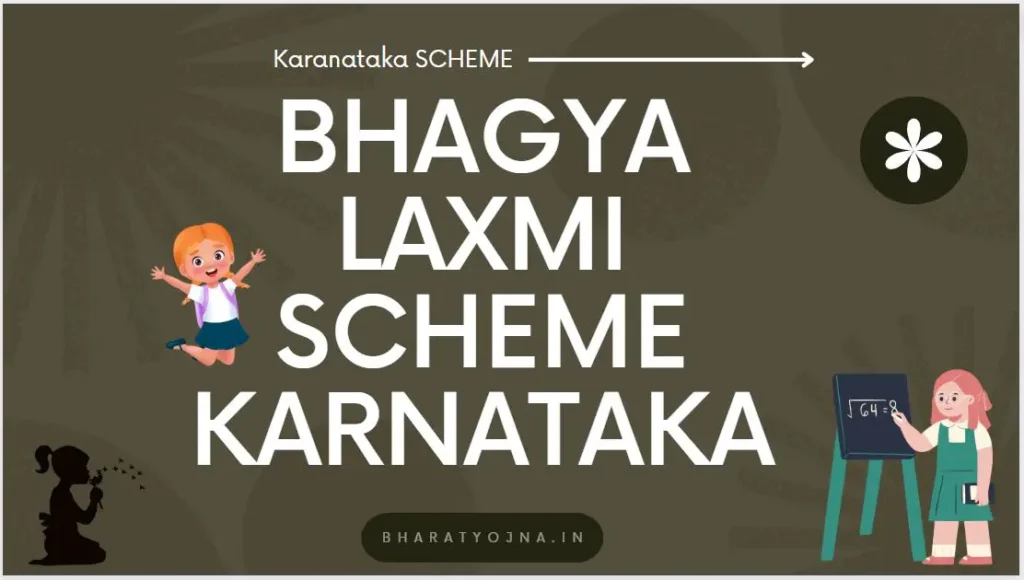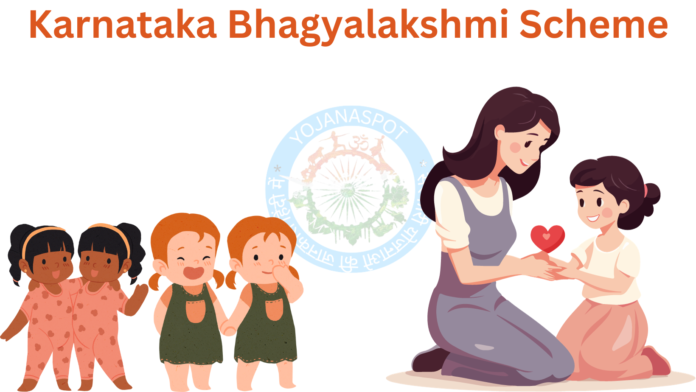The Karnataka Bhagyalakshmi Scheme is a flagship social welfare initiative introduced by the Karnataka government to address the economic and social well-being of women and families in the state.
Table of Contents
I. Introduction
The Karnataka Bhagyalakshmi Scheme is a flagship social welfare initiative introduced by the Karnataka government to address the economic and social well-being of women and families in the state. Launched with the primary objective of promoting financial inclusion and empowering women, this scheme aims to provide financial assistance and support to eligible beneficiaries.
The scheme derives its name from “Bhagyalakshmi,” symbolizing prosperity and fortune. By focusing on the economic empowerment of women, the Karnataka government aims to create a positive impact on the overall development of families and communities. This introduction sets the stage for a detailed exploration of the various aspects of the Karnataka Bhagyalakshmi Scheme, including eligibility criteria, benefits, application processes, and its impact on the lives of beneficiaries.

II. Eligibility Criteria for Bhagyalakshmi Scheme
A. Criteria for Beneficiary Selection
The Karnataka Bhagyalakshmi Scheme is designed to target specific groups to ensure that the benefits reach those who need them the most. Eligibility criteria play a crucial role in determining who qualifies for the scheme. This may include considerations such as income levels, social status, and other relevant factors. By identifying and prioritizing beneficiaries based on specific criteria, the government aims to address the needs of vulnerable and marginalized sections of the population.
B. Income Criteria
One of the key eligibility factors for the Karnataka Bhagyalakshmi Scheme is the income level of the prospective beneficiaries. The scheme may target families falling below a certain income threshold, ensuring that financial assistance is directed to those facing economic challenges. This criterion helps in prioritizing the support towards economically disadvantaged households, contributing to poverty alleviation and inclusive development.
C. Other Eligibility Factors
In addition to income criteria, the Karnataka Bhagyalakshmi Scheme may consider other demographic factors, such as age and marital status, to identify eligible beneficiaries. For example, the scheme might focus on providing support to young women or newly married couples, recognizing the specific challenges they may face. By incorporating various eligibility factors, the government aims to tailor the benefits of the scheme to the unique needs of different demographic groups.
III. Benefits and Components for BhagyaLakshmi Scheme
A. Financial Assistance Provided
One of the central components of the Karnataka Bhagyalakshmi Scheme is the provision of financial assistance to eligible beneficiaries. This assistance may be in the form of direct cash transfers, allowing beneficiaries the flexibility to utilize the funds according to their specific needs. The amount of financial assistance may vary based on the individual circumstances of the beneficiaries, with a focus on addressing immediate financial requirements and promoting economic stability.
B. Incentives or Support Offered
Apart from direct financial assistance, the scheme may include additional incentives or support mechanisms. These could encompass educational support for children, healthcare benefits, or skill development programs for women. By offering a comprehensive package of incentives, the Karnataka government aims to address the multifaceted needs of beneficiaries, promoting holistic development and long-term sustainability.
C. Key Components of the Scheme
The Karnataka Bhagyalakshmi Scheme may comprise various components aimed at enhancing the overall well-being of beneficiaries. These components could include access to banking facilities, insurance coverage, and vocational training opportunities. By addressing both immediate financial needs and building capacity for long-term economic independence, the scheme aims to create a positive and sustainable impact on the lives of women and families.
IV. Application Process for BhagyaLakshmi Scheme
A. How to Apply for the Scheme
To ensure widespread participation and accessibility, the Karnataka Bhagyalakshmi Scheme is likely to have a user-friendly application process. Prospective beneficiaries may be required to submit applications through designated channels, such as government offices or online portals. Clear instructions and guidelines would be provided to guide applicants through the application process, ensuring that eligible individuals can easily apply for the scheme.
http://blakshmi.kar.nic.in:8080/First.jsp
B. Required Documents and Information
The application process is typically accompanied by a set of required documents and information. These may include proof of identity, income certificates, and other relevant documents that help verify the eligibility of applicants. By ensuring a thorough documentation process, the Karnataka government aims to maintain transparency and accountability in the selection of beneficiaries, preventing misuse or fraud.
C. Application Submission and Processing Details
Upon submission of applications, there is a well-defined processing mechanism in place. This involves the verification of documents, assessment of eligibility criteria, and the determination of the level of financial assistance or support required. Timely and efficient processing is essential to ensure that beneficiaries receive assistance when needed. The Karnataka government may implement a robust system for application submission and processing to streamline the delivery of benefits.

V. Implementation
A. Role of Government Agencies
The successful implementation of the Karnataka Bhagyalakshmi Scheme relies heavily on the active involvement of government agencies at various levels. These agencies play a crucial role in the identification of beneficiaries, distribution of financial assistance, and monitoring the overall impact of the scheme. Close coordination between different departments ensures a seamless implementation process, contributing to the effectiveness of the initiative.
B. Collaboration with NGOs and Other Stakeholders
In addition to government agencies, collaboration with non-governmental organizations (NGOs) and other stakeholders is instrumental in reaching a wider audience and maximizing the impact of the scheme. NGOs can contribute by assisting in outreach programs, providing support services, and offering expertise in specific areas such as education and healthcare. A collaborative approach enhances the overall reach and effectiveness of the Karnataka Bhagyalakshmi Scheme.
C. Monitoring and Evaluation Mechanisms
To measure the success and impact of the scheme, robust monitoring and evaluation mechanisms are essential. The Karnataka government is likely to establish systems for regular assessment, feedback collection, and performance evaluation. These mechanisms help identify areas for improvement, ensure accountability, and provide valuable insights into the effectiveness of the scheme in achieving its intended objectives.
VI. Funding and Budget
A. Source of Funding
The Karnataka Bhagyalakshmi Scheme requires adequate funding to sustain its operations and provide meaningful assistance to beneficiaries. The primary source of funding may come from the state budget, with allocations specifically earmarked for social welfare programs. Additionally, the scheme may explore partnerships with external organizations or seek funding from central government schemes to enhance its financial resources.
B. Budget Allocation for the Scheme
The state budget allocates specific funds for the Karnataka Bhagyalakshmi Scheme, reflecting the government’s commitment to addressing the socio-economic needs of women and families. The budget allocation takes into account the number of beneficiaries, the level of financial assistance provided, and the various components of the scheme. Regular updates and adjustments to the budget ensure the sustained operation and growth of the initiative.
C. Financial Sustainability
Ensuring the financial sustainability of the Karnataka Bhagyalakshmi Scheme is a critical aspect of its long-term success. The government may explore strategies to enhance revenue generation or optimize existing resources to support the scheme. By adopting financially sustainable practices, the Karnataka government can ensure that the benefits of the scheme continue to reach deserving beneficiaries in the years to come.
VII. Impact and Success Stories
A. Assessing the Impact of the Karnataka Bhagyalakshmi Scheme
Measuring the impact of the Karnataka Bhagyalakshmi Scheme is essential for evaluating its effectiveness in achieving its goals. The government may conduct impact assessments, surveys, and studies to gather data on the socio-economic changes brought about by the scheme. Key indicators such as improved financial stability, increased educational attainment, and enhanced healthcare access can provide insights into the overall impact on beneficiaries.
B. Success Stories or Case Studies
Highlighting success stories and case studies is a powerful way to showcase the tangible benefits of the Karnataka Bhagyalakshmi Scheme. These
stories could feature individuals or families whose lives have been positively transformed through the scheme’s interventions. By sharing success stories, the government can build public support, inspire confidence in the scheme, and motivate potential beneficiaries to actively participate.
VIII. Challenges and Solutions
A. Identifying Challenges in the Implementation
Despite the best intentions, social welfare schemes often face challenges during implementation. The Karnataka Bhagyalakshmi Scheme may encounter obstacles such as administrative bottlenecks, outreach issues, or unforeseen socio-economic factors. Identifying these challenges is the first step towards developing effective solutions that ensure the smooth functioning of the scheme.
B. Strategies or Solutions to Overcome Challenges
To address challenges, the Karnataka government may implement strategies such as capacity building for government officials, enhancing technology infrastructure for smoother operations, and conducting awareness campaigns to improve outreach. By proactively addressing challenges, the government can refine and strengthen the Karnataka Bhagyalakshmi Scheme, making it more resilient and responsive to the evolving needs of beneficiaries.

IX. Conclusion
A. Recap of the Karnataka Bhagyalakshmi Scheme
In conclusion, the Karnataka Bhagyalakshmi Scheme stands as a testament to the government’s commitment to promoting the welfare of women and families in the state. The scheme’s multi-pronged approach, encompassing financial assistance, incentives, and support services, reflects a holistic vision for empowering beneficiaries and fostering inclusive development.
B. Future Prospects and Enhancements
Looking ahead, the Karnataka government may explore avenues for enhancing the scheme further. This could involve expanding the reach of the program, introducing new components based on evolving needs, and leveraging technology for more efficient implementation. By continuously assessing and adapting the Karnataka Bhagyalakshmi Scheme, the government can ensure its relevance and impact in the ever-changing socio-economic landscape.
As the Karnataka Bhagyalakshmi Scheme continues to evolve, it remains a vital instrument in the pursuit of a more equitable and prosperous society, emphasizing the state’s commitment to the well-being and empowerment of its citizens.


